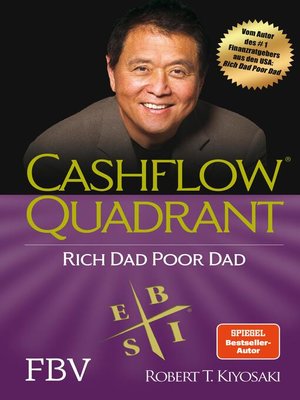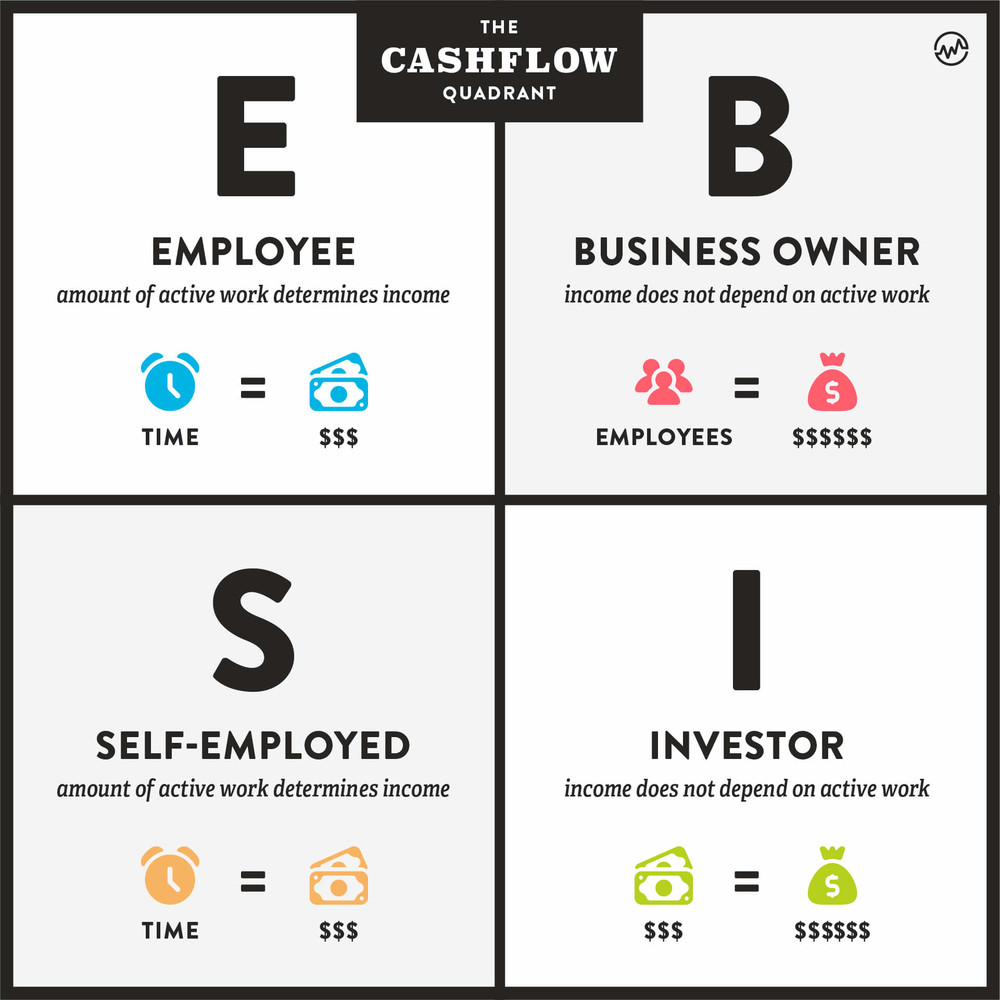
The I quadrant is where the wealthy exist. I-Quadrant Words - Is my cash flow based on an internal or net rate of return? So the S owns a job, the B owns a system. If an S leaves their business, it usually disappears. Bs are usually strong leaders that can inspire others, but the biggest difference between the small-business owner (S) and business owner (B) is that the B can leave their business for a year and return and the business is more profitable and running better than they left it.


They like to delegate work to others who are more knowledgeable in that area. These people like to surround themselves with people from the other categories to become more efficient. People from the B quadrant are really the opposite of the S. Many S people are perfectionists and often feel for a job to be done right that they have to do it.ī-Quadrant Words - I'm looking for a manager to run the day-to-day operations. It also includes small business owners, direct-commission salespeople, and real estate agents. This profession often includes educated professionals such as doctors, lawyers, and dentists. Whereas an E responds to fear of not having money by looking for security, an S will look to take control of the situation and do it on their own. People in the S quadrant are usually very independent. They don't like to have their income dependent on other people. People from the S quadrant are ones who want to be their own boss. The S (Self-employed OR small-business owner) It's not really what they do, but the contractual agreement they have with who hires them. Employees can be the president of a company or the janitor. For people in this quadrant, security is more important than money. They want a steady, secure job with good benefits. People from the E quadrant hate the fear that comes with "economic uncertainty".

He also can tell a person's quadrant by the words that they use.Į-Quadrant Words - Safe, secure job, good benefits You might have the intellectual knowledge to move from one quadrant to another, but you may not have the emotional ability to handle the ups and downs typical of a different quadrant. The quadrant you are in is really at the core of who you are. Kiyosaki says that he learned from his "rich dad" that anybody can move from one quadrant to another, but it's not as easy as just deciding to move. This chapter introduces the idea of how people can move from one quadrant to another. Chapter 2 - Different Quadrants, Different People As I'm sure many of you were told growing up, "Go to college and get a good job." Heck, isn't that the whole core of what we say as educators? "Make sure you go to college so you can get a good job." This statement is true for some people according to Mr. Everyone gives up their time for money, and the more money you make, the more time you give up. This first chapter doesn't really get into the finer points of the four quadrants, but something that stuck out to me immediately when I read through it the first time was that I had always just taken for granted that ALL people work a job. Kiyosaki ends the chapter stressing the point that no quadrant is better than another. Kiyosaki points out that his "poor dad", who earned his money on the left side, had to spend more time working as he made more money, but his "rich dad", who earned his money on the right side, worked less as he made more. Whereas his "rich dad" felt that money was important to him "living life" and found ways to earn money without giving up his time working for it.

He recalled how his "poor dad" would tell him that money wasn't important to his life, yet he spent much of his life working for it. Kiyosaki refers back to his first and most popular book, Rich Dad, Poor Dad throughout this book. It really depends on your personal strengths and weaknesses. He says you can be rich or poor in ANY of the four quadrants. He doesn't go into detail yet, but if you bring in money, it comes from one of those four quadrants, BUT it doesn't mean that you can't bring in money from other quadrants as well. The image above shows these four quadrants.


 0 kommentar(er)
0 kommentar(er)
